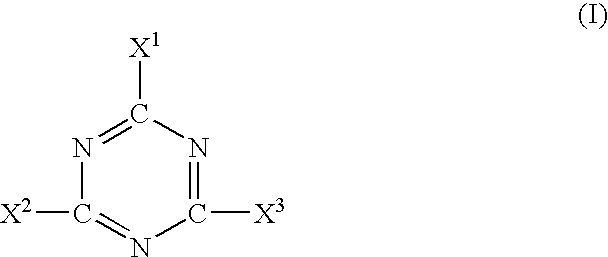Flame resistant matelasse fabrics utilizing spun and filament flame resistant yarns
a flame-resistant yarn and matelasse fabric technology, which is applied in the field of flame-resistant matelasse fabrics utilizing spun and filament flame-resistant yarns, can solve the problems of reducing wear life, brittle chars, shrinking and cracking, and losing flame-retardant properties, so as to achieve easy application and reduce the level of flammability
- Summary
- Abstract
- Description
- Claims
- Application Information
AI Technical Summary
Benefits of technology
Problems solved by technology
Method used
Image
Examples
Embodiment Construction
[0021] In accordance with the first aspect of the invention, three different types of spun yarns or filament yarns are utilized in knitting a three-layer matelasse fabric. The top layer of the matelasse fabric consists of standard non-FR face yarns, such as those made from cotton, rayon, lyocell, polyesters, acrylic, nylons, wool, silk, mohair, cashmere, kenaf, jute, sisal, polyolefins, cellulose acetates, triacetate and polylactides or any combination thereof. Preferably, these top layer spun yarns range in cotton count from 20 / 1's to 36 / 1's.
[0022] The middle layer and bottom layers of the FR matelasse fabric of the present invention consists of FR spun yarns, such as those which can be made from any combination of fibers selected from the three following fiber categories. The middle and bottom layer FR spun yarns can be made by selecting one or more fibers from all three Categories or by selecting fibers one or more fibers from only Categories 2 and 3. Preferably, the middle laye...
PUM
| Property | Measurement | Unit |
|---|---|---|
| Electrical resistance | aaaaa | aaaaa |
Abstract
Description
Claims
Application Information
 Login to View More
Login to View More - R&D
- Intellectual Property
- Life Sciences
- Materials
- Tech Scout
- Unparalleled Data Quality
- Higher Quality Content
- 60% Fewer Hallucinations
Browse by: Latest US Patents, China's latest patents, Technical Efficacy Thesaurus, Application Domain, Technology Topic, Popular Technical Reports.
© 2025 PatSnap. All rights reserved.Legal|Privacy policy|Modern Slavery Act Transparency Statement|Sitemap|About US| Contact US: help@patsnap.com

